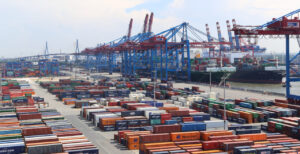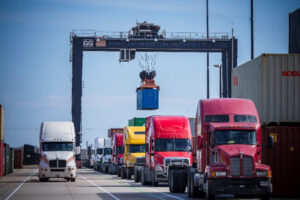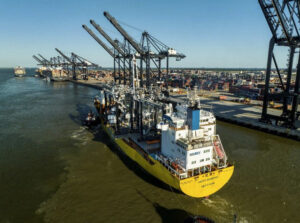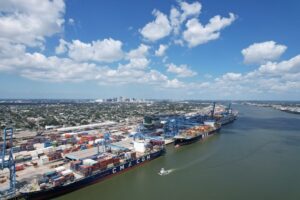UK-based bank the Royal Bank of Scotland has warned that investors face a ‘cataclysmic year’ when equities could lose a fifth of their value and that oil could slump to US$16 a barrel on the back of a slowing Chinese economy, with Drewry Maritime Research questioning whether this will have ramifications for the container market, according to the shipping consultants’ latest container insight report.
The current trajectory of oil prices and stocks markets around the world suggests that such predictions are plausible.
Brent Crude, for example, has halved from its 2015 peak in May to under $30 per barrel at the start of last week – the lowest since 2004 – before staging something of a rally at the end of the week.
Add the re-introduction of Iran following the lifting of sanctions, and another four million barrels a day could be added to an already oversupplied market, leading most analysts to predict no significant rise in prices until next year at the earliest.
However, Drewry believes that the latest stock market volatility is not necessarily a precursor for another crash in goods moved by containership.
China’s speed of growth is indeed slowing – hence the spill over effects on commodity prices and share prices – but it is hardly breaking news and shouldn’t be enough on its own to have prompted such a decrease on equities.
It should also be remembered that such has been China’s meteoric rise that growth of nearly 7% in 2015 is worth more in dollar terms than 10% was previously.
In its latest World Economic Outlook, the International Monetary Fund (IMF) maintained its GDP forecast for China for the next couple of years, while at the same time downgrading its outlook for world output.
The International Monetary Fund said that China’s slowing progression is “broadly as envisaged” as the government transitions to a more balanced economy that puts more emphasis on services and consumption, but added that imports and exports were slowing faster than expected as a consequence of weaker investment and manufacturing activity.
It is this latter point, as opposed to any investor fear, that has induced Drewry to downgrade its ocean demand forecast for 2016 by 0.9% to 2.4%.
China’s container addition in 2015 still contributed over half of the world’s extra handling, which at just 1.3% was the second lowest rate since Drewry’s records began in 1979 (after 2009).
Last year’s slowdown in port traffic was not commensurate with the change in global economic output, which the IMF reported slipped from 3.4% in 2014 to 3.1% in 2015.
While the effect of lower oil prices on consumer demand and spending habits is uncertain there are obvious cost benefits for carriers as bunkers are the single largest ship operating expense.
It is too early to tell if the latest stock market bearishness is indeed an early signal of a global recession, or simply herd-like panic, but as far as the prospects for container trade go there hasn’t been a significant change in the fundamentals to shift us from our current prognosis of continued muted growth in the short-to-medium term.
In such a weak demand environment carriers would be wise to address the side of the supply-demand equation that they can influence and do more to narrow the gap between the two, which as we wrote about two weeks ago, 2015 widened to its second-worst this century, behind 2009.
Drewry View: A global recession cannot be discounted but the current decrease on stocks is not proof that one is imminent. Trade indicators might not be particularly strong but they haven’t weakened significantly in the last month to make us think world container traffic is about to go into reverse.








